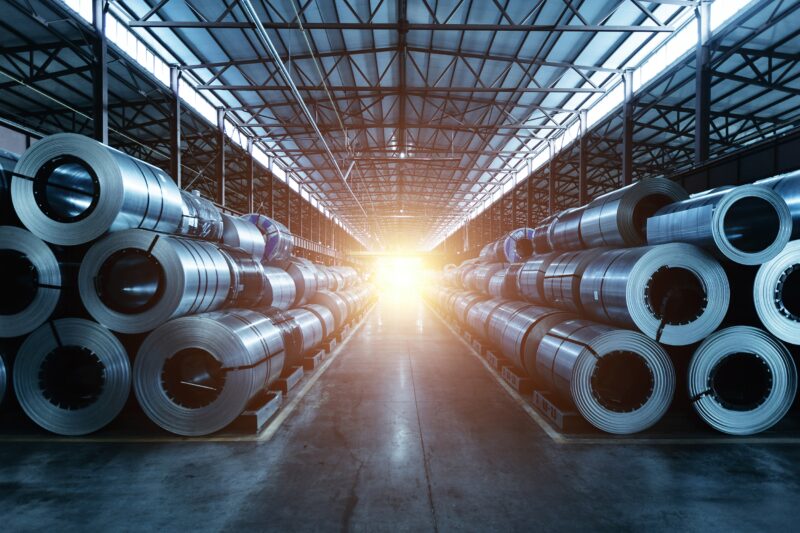Blog Steel Commander Corp
Galvalume Steel VS Galvanized Steel

Galvalume steel is a type of steel product that is coated with a combination of aluminum, zinc, and sometimes silicon. This coating provides enhanced corrosion resistance compared to traditional galvanized steel. Common applications of Galvalume steel include roofing and siding in areas where exposure to harsh weather makes durability and corrosion resistance essential. The name “Galvalume” is a combination of “galvanized” and “aluminum” and the coating typically consists of:
- 55% Aluminum: The majority of the coating is made up of aluminum, which provides excellent corrosion resistance.
- 43.5% Zinc: Zinc enhances the corrosion resistance of the steel, especially in areas where the aluminum coating may be damaged.
- 1.5% Silicon: Silicon is sometimes included in the coating to improve adhesion and durability.
Galvanized steel is a type of steel product that is coated primarily in zinc with additional alloying elements. The coating is applied through processes like hot dip galvanizing or electr0-galvanizing.
- Hot-dip galvanizing: The steel is immersed in a bath of molten zinc, and as it is withdrawn, a layer of zinc alloy is formed on its surface. This coating typically consists of approximately 98% zinc and around 2% alloying elements, which may include small amounts of aluminum or silicon.
- Electro-galvanizing: A similar coating is achieved through an electroplating process. Zinc is deposited onto the steel surface through the application of an electric current.
Performance and Longevity Comparison:
- Coating Composition:
- Galvalume Steel: Galvalume is coated with a combination of 55% aluminum, 43.5% zinc, and 1.5% silicon. This composition provides excellent corrosion resistance and durability.
- Galvanized Steel: Galvanized steel is coated with a layer of zinc. The coating is typically applied through a hot-dip galvanizing process.
- Corrosion Resistance:
- Galvalume Steel: Galvalume offers superior corrosion resistance compared to galvanized steel, especially in harsh or corrosive environments. The aluminum component provides added protection against rust.
- Galvanized Steel: While galvanized steel provides good corrosion resistance, it may be more susceptible to corrosion in certain environments compared to Galvalume steel.
- Appearance:
- Galvalume Steel: Galvalume has a characteristic shiny appearance due to its aluminum content. It can develop a natural patina over time, which is often appreciated for its aesthetic qualities.
- Galvanized Steel: Galvanized steel has a matte, spangled finish due to the zinc coating. The appearance tends to be more uniform and consistent.
- Temperature Resistance:
- Galvalume Steel: Galvalume steel exhibits good heat resistance, making it suitable for applications where exposure to high temperatures is a consideration.
- Galvanized Steel: Galvanized steel also has decent heat resistance but may not perform as well as Galvalume in extremely high-temperature conditions.
- Application Areas:
- Galvalume Steel: Commonly used in roofing, siding, automotive components, and other applications where long-term corrosion resistance is crucial.
- Galvanized Steel: Widely used in construction, fencing, HVAC systems, and various applications where a lower initial cost and corrosion resistance are important.
- Longevity:
- Galvalume Steel: Generally has a longer lifespan than galvanized steel, making it a preferred choice in applications where durability is a primary concern.
- Galvanized Steel: While durable, galvanized steel may have a shorter lifespan in certain conditions.




















